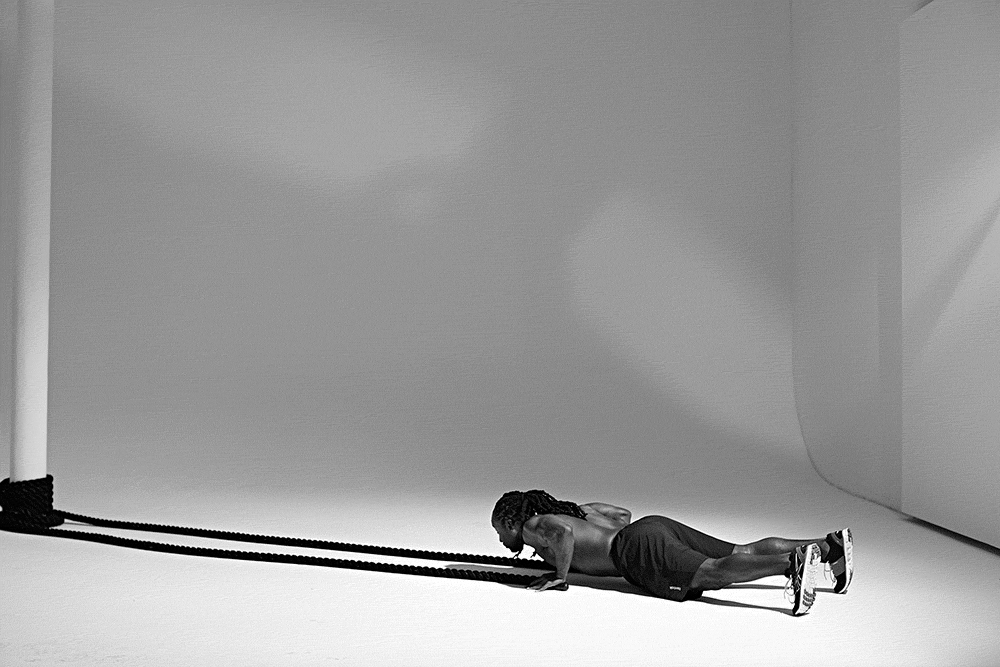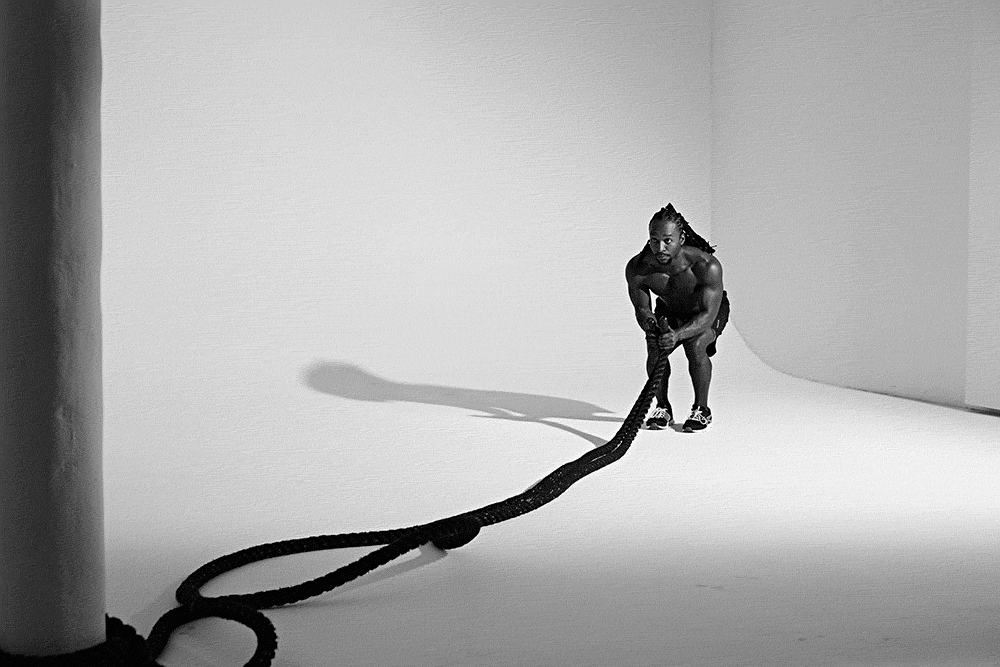Skipping and jumping it is not -- this type of rope work has a bit more heft. Though often found coiled in a corner of your exercise floor, the weighted rope has potential beyond its occasional appearance in a circuit workout. In fact, if used creatively, this understated piece of equipment can offer a stand-alone, total-body workout that's anything but basic. Rope work is one of the most efficient ways to simultaneously boost your metabolism and tone muscle, which is precisely why we tapped one of its masters, group fitness instructor Gerren Liles, who teaches the rope-centric Whipped! class, to show you the ropes.
More from Q by Equinox:
The Lies We Believe About Sleep
The New Thinking On Nighttime Eating
The Most Stylish Way To Sweat
"If you want an upper-body activity that maintains the level of cardiovascular intensity of plyometric exercises like sprints or box jumps, whipping is an excellent addition to your routine," says Liles. "Plus, even though you'll get the awesome upper-body workout, engaging the legs in some capacity, even by simply squatting down and up, will increase the total-body benefit."
Liles, who created the routine he demonstrates in the animated GIFs below, recommends adding rope work twice a week to your regimen. "Whatever your typical routine, this will be beneficial in maintaining a high calorie burn during and after your workout," he says. "I designed this particular mix so that seven to eight of these exercises could form an excellent stand-alone workout, as these moves target upper body, lower body and core."
Plyo Pushup
Start in plank position with an end of the rope beneath each hand. Grip the rope with the thumb and first two fingers, or wrap your fingers around the top, but do not rest your knuckles under the rope. Lower your chest towards the floor, then dynamically push off, raising and slamming the rope down. Land in a push-up, being careful not to lock out your arms. Return to plank position, then repeat. Do three sets of 10 reps, with 30 to 45 seconds of rest in between.
Lateral Shuffle With Whip
Find a starting point and shuffle to the side, timing your whip to the steps (your hands should be close and whipping together). When you reach your endpoint, squat and push off the outside foot to return to the other side. Do three sets of 30 seconds on, 30 seconds off.
Star Jump
Start in a narrow squat, legs together, gripping the handles of the rope with the ends facing upward. Jump while opening and closing the legs quickly, and swinging your arms overhead as if doing a jumping jack. Land in a squat with your legs together and hands in front of your hips. Repeat. Do three sets of 30 seconds on, 30 seconds off.
Making small tweaks to your stance, grip and even your choice plane of motion can translate to serious payoff during your session, in the form of increased muscle isolation and activation. Follow Liles' advice below.
Change Your Stance
"Anything that decreases your base of support ups the intensity of the whip. Narrowing your stance, such as standing in a split squat or lunge position, will up the challenge to your balance. On occasion, I would stand on one leg, or even stand on top of a Bosu to further increase my instability."
Get A (Different) Grip
"Changing the grip can also affect the workout. Grabbing the handle with the end facing up keeps the biceps in a consistent state of contraction and makes sagittal motions easier. Gripping with the handles pointing towards you (or overhand) is good for circular or lateral motions."
Hit Multiple Planes of Motion
"Whipping in a lateral or side-to-side motion will force you to contract your obliques and transverse abdominus more to stay centered."
Photography by Mike Rosenthal; Groomer: Jason Murillo; Photo Direction: Ashley Martin

